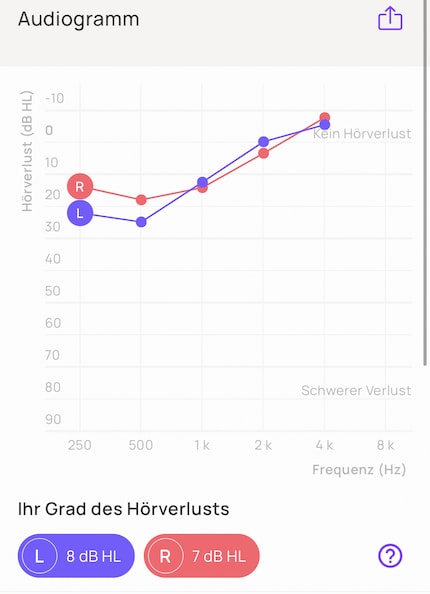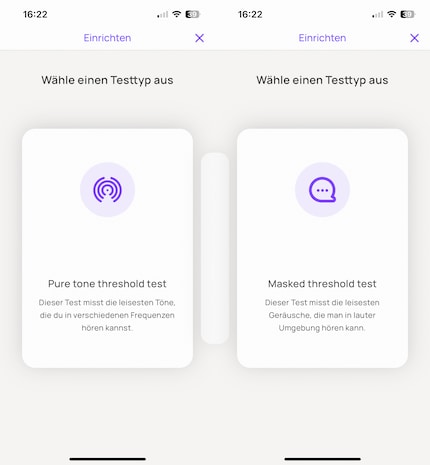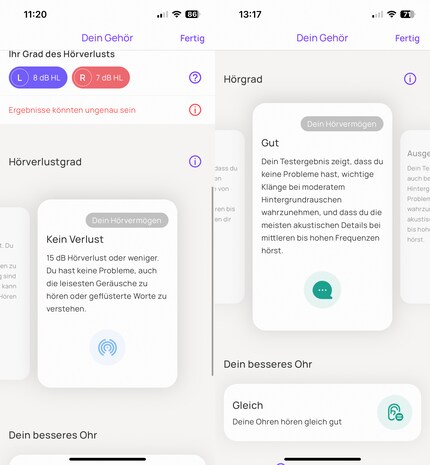
News + Trends
IFA 2023: Our reports from Berlin
by Luca Fontana

Hearing loss starts much earlier than you think. The Mimi app helps you to recognise this. You can individualise the sound and compensate for lost frequency spectra.
The Digitec and Galaxus editorial team will be reporting on site from IFA 2023 in Berlin. You can find all the news and background information published so far in our overview:
Imagine you're in the car, listening to some music and driving. Then suddenly that one song comes on. Then you turn up the volume, right? Gotcha. That's how I feel too. You might have the feeling that the volume draws you more into a song, that you hear it more intensely.
The perceived lower intensity may also be due to the fact that your hearing is already missing certain frequency spectra. This is because from the age of 25, our hearing power steadily decreases a little. Sometimes even earlier, as a study by the Swiss Health Observatory from 2022 shows. You hardly notice this in everyday life, but when listening to music you unconsciously compensate for the lack of detail by turning up the volume. This exacerbates the problem.
During my tour of the new Teufel products, I meet Florian Schneidmadel.
He is the CEO of "Mimi Hearing Technologies". The company has developed a technology that allows you to test your hearing. And then packaged it in an app. This tells you how high your hearing capacity is and whether you are on average for your age group. You also receive a hearing profile. This shows you whether and where your hearing has deteriorated.

Depending on which headphones or TV you use, you can export your hearing profile directly to their apps. The company works with a number of audio and TV manufacturers. They integrate Mimi into their own apps. If your device is one of them, "mimification" is activated and the sound is adapted to your hearing profile. You can find out who all the Mimi partners are here. Of course, this then applies to all your content on these devices, including audiobooks or audio tracks from videos.
If you're not a big music fan: Mimi is also available as a Chrome extension. If you use Chrome and have tested Mimi, the extension adapts the sound to your hearing. For example, when watching YouTube videos or watching a series on Netflix. All you have to do is log in with your Hearing ID after installing the extension.
A particularly important point for Schneidmadel: Mimi is not an equaliser. It does not simply turn a digital bass or treble control. This increases or decreases entire frequency spectra far too roughly and too generally. This would distort the sound - the technical term for this effect is "masking".
The Mimi app, on the other hand, measures where your hearing difficulties lie and then amplifies only those frequencies that you can no longer perceive properly or at all. In this way, details of the sound that you can no longer hear properly are restored. And it does so without having to increase the overall volume. Mimi calls this "biologically inspired signal processing".
You can download the app for Android or for iOS free of charge. However, Mimi is currently focussing on the iOS app and developing it further.
The app offers you two tests. One is the so-called "Pure tone threshold test". This measures the quietest sounds that you can hear at different frequencies. The second is the "Masked threshold test". This simulates a loud environment and measures how loud the sounds need to be for you to still be able to hear them.

I did both tests. They showed that I have no hearing loss in a quiet environment. However, "no hearing loss" is a spectrum. You fall into this category if your average loss is lower than 15 decibels. My loss is 8 dB on the left and 7 dB on the right.
For example, my hearing has decreased in the range around 500 Hertz. I now "mimic" my music in this range accordingly. I connect the Mimi app to my Mimi-compatible headphones. A virtual control dial appears, which I can adjust continuously. After experimenting for a while, I get the impression that I actually perceive the sound in more detail. But not in a world-changing way. I probably wouldn't pay for it. But it's quite cool like this.

However, I only wear in-ears and listen to MP3 files that are sampled at 192 kilohertz. If I were to increase the sampling rate to 320 kilohertz and use higher-quality headphones or a speaker, the benefit would probably be greater. After all, I now rarely feel the need to turn up the volume.
Cover image: ShutterstockI've been tinkering with digital networks ever since I found out how to activate both telephone channels on the ISDN card for greater bandwidth. As for the analogue variety, I've been doing that since I learned to talk. Though Winterthur is my adoptive home city, my heart still bleeds red and blue.
From the latest iPhone to the return of 80s fashion. The editorial team will help you make sense of it all.
Show all